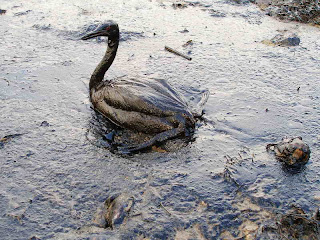When skies are grey and
pouring rain, people will grab their raincoats and umbrellas before going
outdoors.
Many wild animals will
take cover under trees or in any dry space they can find because, as everyone
knows, being out in the cold can be hard to bear, but being soaked to the skin
along with being out in the cold is quite a bit worse.
Since this is very true
for people and many animals, how come penguins can be seen in the Antarctic,
swimming comfortably in the frigid waters, and then hopping out of the water
onto the snow as if neither situation is very cold?
How about ducks and geese
swimming in a pond on a cold winter’s evening, never seeming to be bothered by
the chilling water?
Tsavo, a Bateleur Eagle, shows off his beautiful head feathers (Photo by WBS volunteer Sandra Lowe Murray)
This is all possible
because of the remarkable thing that only birds are lucky enough to
posses—feathers! Feathers have
unique qualities that not only allow most birds to fly, but also to keep birds
warm/cool and dry when necessary.
Parts of a feather: 1-Vane, 2-Rachis, 3-Barb, 4-Afterfeather, 5-Hollow Shaft, Calamus (Illustration from Wikipedia website)
An extremely important
component of feather waterproofing is the structure of the feathers themselves.
The longest and thickest part of a feather is called a rachis. From the rachis grow the barbs. These barbs together form the vane or
blade of the feather (the softer more pliable section). Off of the barbs are smaller
protrusions referred to as barbules. These are microscopic and have tiny hooks
on them that connect the barbules together and by extension, the barbs
themselves. When all of the barbules and barbs are hooked together (in a sort
of “Velcro” fashion) this creates touch points on the feather that makes the
water bead, and keeps water from seeping into the feather itself.
Since bird feathers have
the ability to repel water, slightly overlapping feathers across the body makes
feathers act like roof shingles so that the water can roll down each feather
and then off the bird. Birds also
have a gland at the base of their tails that secretes oil. Through preening, the oil is spread
over all feathers and aids in keeping birds waterproof.
Jet, an American Kestrel can control his body temperature by raising or lowering his feathers (Photo by Gay Schroer)
There is a big difference
between uropygial gland oil and fossil fuel oil. Oil spills will separate the feathers and cause gaps in the
arrangement of them. This allows
water and cool/hot temperatures to reach their down feathers (fluffy feathers
that generally lie below the contour feathers) and also their skin. In addition
to the lack of waterproofing, the oil-covered birds will try to preen (run
feathers through their beak) continuously to rid their feathers of the
oil. Not only will the bird
swallow oil, constant and non-stop preening is called hyper-preening and can
result in permanent feather damage (broken rachises, barbs and barbules).
Some bird species like
pigeons and herons have types of feathers called powder down. Instead of
molting, powder down feathers continuously grow and the barbs break down into a
fine powder which is spread throughout the rest of the feathers. This powder is believed to help repel
water from some bird’s feathers.
While all of the above
tactics aid in keeping water off of a bird’s feathers, Sand Grouse that live
primarily in the desert have feathers that capture water. These feathers are curved and are able
to keep water trapped so that, after it bathes in water (which can be miles
from its nest), it can then carry the caught water back to its chicks, which
drink the water from their parents’ feathers.
So whether or not they are
keeping dry or carrying water with them, something as light as a feather, is
heavy with importance for a bird’s survival.
The next time you visit
the World Bird Sanctuary be sure to check out the “touch table” display to see
just how remarkable a feather truly is.

.jpg)









No comments:
Post a Comment